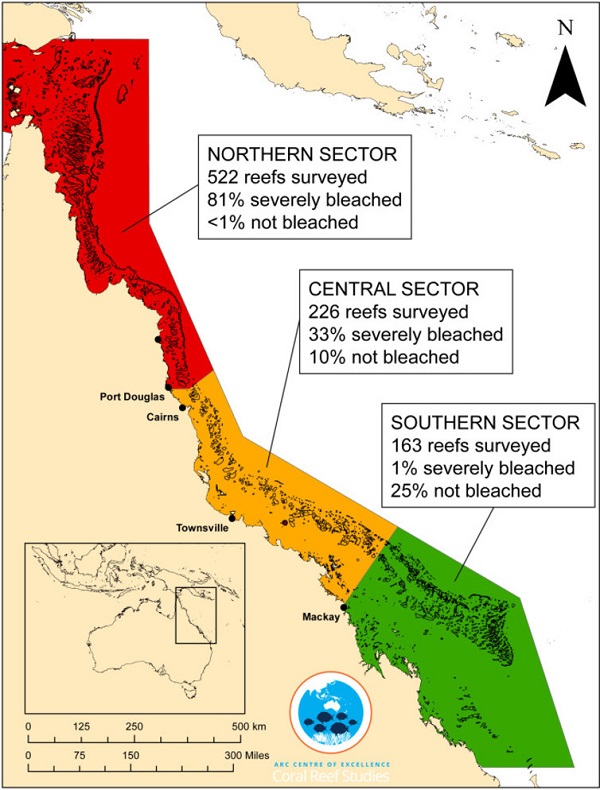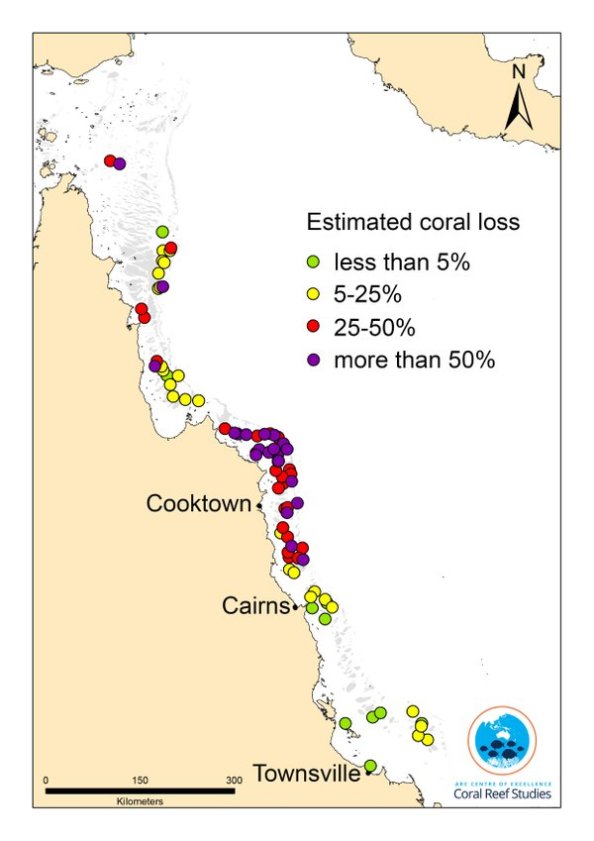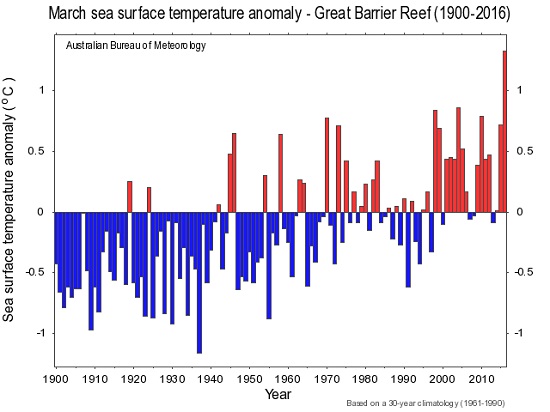Our government seems bent on saving the tourist industry by airbrushing the Great Barrier Reef out of UN reports. The report “World Heritage and Tourism in a Changing Climate”, published jointly by UNESCO, the United Nations Environment Program and the Union of Concerned Scientists, initially had a key chapter on the Great Barrier Reef, as well as small sections on Kakadu and the Tasmanian forests.
The chapter was removed at the request of the Australian government. They were worried the tourists may not come.
Will Steffen, emeritus professor at the ANU and head of Australia’s Climate Council, said it was what you might expect from the old Soviet Union, not from a modern democracy.
The Guardian, who broke the story says:
- At the time, news of the government’s science research agency CSIRO sacking 100 climate scientists due to government budget cuts had just emerged; parts of the Tasmanian world heritage forests were on fire for the first time in recorded history; and a global coral bleaching event was beginning to hit the Great Barrier Reef – another event driven by global warming.
Bleaching should have come as no surprise. David Spratt at Climate Code Red:
-
And in his 2009 Royal Society presentation, Charlie Veron included a slide (below) which said: “400 (ppm) will be reached by ~2015; will cause major weather events; will cause severe bleaching, mainly during El Nino years”. He was spot on. So the science-aware have known for at least seven years that this moment would arrive.
This was the initial damage from bleaching:

Via Roger Jones at Understanding Climate Risk in Hunt lies as the reef dies, this is the latest on how many reefs are dead:

I believe the average over the two northernmost sectors is 35%.
Labor has promised $500 million to help the Reef, including $377 million which they claim as new money. In this piece Greg Hunt claims they will spend $460 million for the Reef. We need a fact checker to unravel, because it doesn’t sit well with Butler’s claim of new money.
Of interest, Butler told Patricia Karvelas that $50 million would go to repairing the damage done by the CSIRO to their GBR-related activity.
Both Labor and the LNP are enhancing the campaign against the crown of thorns starfish, but Prof Terry Hughes told Fran Kelly that only 21 of 3000 reefs would get that attention.
I’d have to agree with Richard Di Natale, though:
- Well, the simple fact is you can’t be taken seriously on saving The Great Barrier Reef when you remain committed to opening up new coal mines which will sign the death warrant of the Great Barrier Reef.
Back to David Spratt, who addresses the grim reality – the 1°C of warming we have now is already too much, and that 1°C will turn to at least 1.5°C before the earth reaches equilibrium. Again via Roger Jones, the sea surface anomaly this tear reached 1.5°C above the 1961-1990 average:

Spratt believes that if we want to preserve the Reef we’ll need to get CO2 levels below 350 ppm, perhaps to 320 ppm.
But any such plan will involve overshooting which will cook most of the reefs of the world along the way. Spratt says we need to seriously think about solar radiation management (SRM), or geo-engineering. He’s talking about sulphate aerosols in the upper atmosphere.
If we can’t stomach that we’d have to agree with his bottom line:
- Now we need an urgent conversation about what it would take to “Save the Reef”, given the conditions that now exist.
Seriously!


The sort of money Labor is talking about may reduce run-off damage and do something about the crown of thorns but will do nothing about global warming.
The distribution of damage diagram above does suggest that there may be some benefits that flow from understanding why some reefs appear to have suffered little damage.
There may also be some benefits from relocation programs.